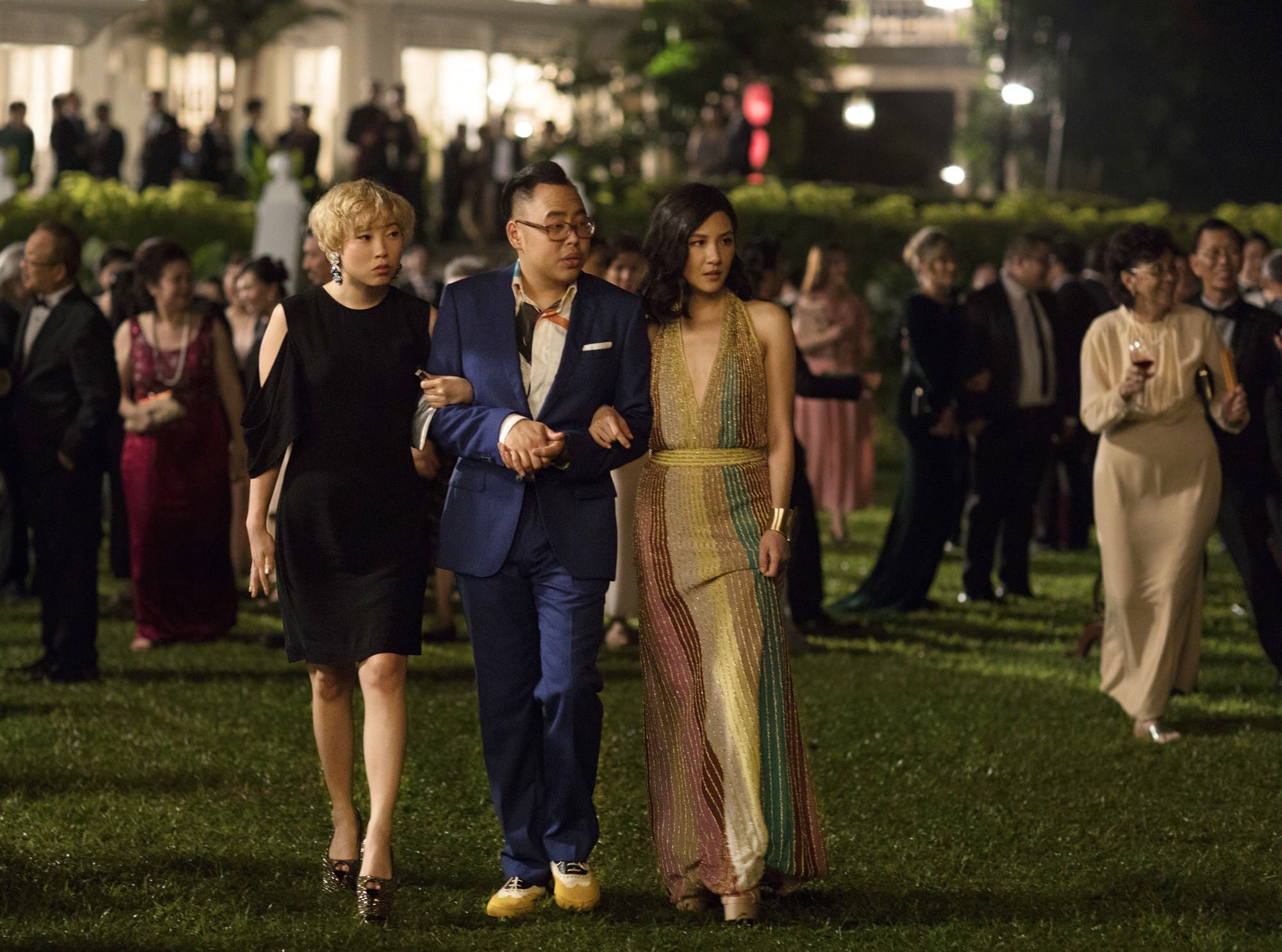
2018 has been a better year from a box office standpoint for diversity in film. Earlier in the year, films with minorities or women leads won the box office 11 out of 12 weekends. There is definitely still a way to go, especially behind the camera, but with the box office success of movies like Get Out and Black Panther, it has paved the way for stories from other viewpoints. We are doing away with the notion that audiences will not go see movies comprised of a diverse cast.
1993’s The Joy Luck Club was the last movie preceding Crazy Rich Asians that featured an Asian cast in the majority. In making this movie that is an adaptation from author Kevin Kwan’s best selling book, it was important for him and director John M. Chu to have some strong creative control. There was a Netflix bid that gave that offer, but it was important to get this story on the big screen.
The movie starts meeting our two main characters, Rachel Chu (Constance Wu) and Nick Young (Henry Golding) who are a couple that live in New York. Rachel happens to be an economics professor at NYU. Nick invites Rachel to come with him to Singapore as his childhood friend Colin Khoo (Chris Pang) is getting married and Nick is the best man. What happens after is a macrocosm of culture, secrets, and emotional strife that should feel similar to other rom-com movies that you have seen.
There are similar set ups and situations that could be likened to your lovers from different class systems stories. However, what sets this movie apart is the attention to detail to Asian culture as a learning experience and the performances from the actors and actresses.
There are many layers of this movie that director John Chu and writers Adele Lim and Peter Chiarelli are able to add within the run time that get an equal stage to be important. This movie is very much a coming of age story for Rachel’s character and her view self-worth. Throughout the movie, she is surrounded by excess of flashy lifestyle and riches. One of the only people that she can relate to – that serves as a bridge between the two worlds is her best friend from college, Goh Peik Lin (Awkwafina). Lin’s family that includes Ken Jeong has her eccentric father, Goh Wye Mun serves as the comedic effect within a movie with a big theme.
Awakwafina is a big part of why the comedy works in the movie. In many ways, she’s the personality that Rachel can’t be. Within the movie, she uses a certain dialect at times that could be considered an urban caricature. While her performance is very refreshing and it’s a breath of fresh air during the emotional scenes, some viewers may wonder where that inspiration from that certain dialect comes from and is it how someone from that viewpoint is seen.
Within the Chinese culture of the Young family, there’s the emphasis of what’s best for family collective over individual ambition. This is where the clash of cultures and the difference between mainland Chinese and Chinese Americans come into play. The dynamic between Rachel and Nick’s mother, Eleanor Sung-Young (Michelle Yeoh) is one of the strongest pillars of the movie.
Wu and Yeoh plays off each other very well to the point where you feel bad for Rachel, but you also see Eleanor’s side because that’s her culture. Her family was raised with traditions and sacrificing your own needs for the good of the collective. That’s how they are able to keep their status and riches throughout generations. Also, families marrying into one another to keep a certain societal look. Rachel comes from very average beginnings in which she had to work to get to the life she has.
This adds to the great performance of Henry Golding as Nick where he is willing to choose love over this status that her is born with. It’s the overarching message that love will somehow conquer every barrier you set in front of it.
There’s also a story with Astrid Leong-Teo (Gemma Chan) and her husband, Michael Teo (Pierre Png) that is a more modern story line. It’s gender roles and certain men’s reactions when women are indeed the bread winners. Instead of Michael encouraging Astrid to be the person she’s meant to be and supportive within the marriage, he in turn feels that he has to live up to her status and not be the best person for her. On a smaller scale, this is also a realization for Astrid that builds throughout the movie to not hold herself back. That her status and what she embodies is not a crime even though she’s made to feel that way.
Cinematographer Vanja Cernjul is able to show the beautiful dichotomy of Singapore including the beautiful architecture and skylines. There’s also a particular scene where characters go to the night market to get food when they first arrive to Singapore. Within a movie that pushes extravagance front and center, it was good to see a staple from that particular viewpoint – even if it was brief. Composer Brian Tyler used music from Chinese artists and even adaptations like Coldplay’s Yellow to give the movie a certain sonic flavor to it.
Crazy Rich Asians is a triumph on two fronts. One of the main points that is being rightfully pointed out is that it’s a victory for a diverse cast to allow their stories being told in molds that wouldn’t normally lend themselves to other cultures. It’s also important to see that it’s a really good movie with really good messages that can permeate no matter what background you come from.
There’s the message of true love conquering all and not settling for the life that others have set for you. We all have our traditions that bring the best out of our families, but can also adapt as our families grow.

